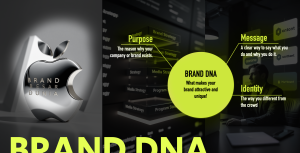Collaboration marketing has become a powerful strategy for brands aiming to expand their reach and resonate more deeply with diverse audiences. By leveraging the strengths and audiences of partnering brands, companies can create impactful campaigns that drive significant engagement and sales. Let’s delve into the success formula behind collaboration marketing, illustrated by some exemplary case studies.
Understanding Collaboration Marketing
Collaboration marketing involves two or more brands partnering to create a campaign that benefits all parties involved. This strategy not only combines resources and expertise but also merges audiences, allowing each brand to tap into new customer bases. Successful collaboration campaigns are typically characterized by aligned brand values, complementary products or services, and creative synergy.
Key Elements of a Successful Collaboration
- Aligned Brand Values: Ensure that both brands share similar values and missions, which can create a cohesive message that resonates with the combined audience.
- Complementary Products/Services: Choose partners whose products or services complement your own, providing added value to consumers.
- Creative Synergy: Develop a campaign that creatively integrates both brands, making it memorable and engaging.
Case Studies of Successful Collaboration Marketing
1. McDonald’s and BTS
In 2021, McDonald’s teamed up with BTS, the globally renowned Korean boy band, to create the “BTS Meal.” This collaboration included a special menu inspired by BTS’s favorite McDonald’s orders and exclusive merchandise. The campaign was a massive success, driving a significant increase in sales and social media engagement worldwide. The BTS Meal leveraged BTS’s immense global fanbase, resulting in sold-out merchandise and heightened brand visibility for McDonald’s (HubSpot Blog) (DigitalDefynd).
2. GoPro and Red Bull
GoPro and Red Bull have formed one of the most iconic partnerships in the marketing world. Both brands focus on adventure and extreme sports, making their collaboration a natural fit. Together, they have produced numerous adrenaline-filled content pieces and sponsored events. This partnership has helped both brands reinforce their identities as leaders in the adventure lifestyle market, driving consumer engagement and brand loyalty (Delhi School of Internet Marketing).
3. Uber and Spotify
Uber and Spotify partnered to enhance the rider experience by allowing Uber passengers to play their Spotify playlists during their rides. This collaboration created a unique value proposition for Uber users and gave Spotify a new platform to attract premium subscribers. The partnership effectively combined the strengths of both brands to offer a differentiated service that benefited users of both platforms (Delhi School of Internet Marketing).
4. Levi’s and Google
Levi’s and Google joined forces to create the Commuter Trucker Jacket with Jacquard by Google. This smart jacket allows wearers to control their smartphones using gestures on the jacket sleeve. Targeted at urban cyclists, this innovative product highlights how technology and fashion can merge to offer practical solutions. The collaboration successfully attracted tech enthusiasts and fashion-forward consumers, showcasing the innovative potential of both brands (Delhi School of Internet Marketing).
Why Collaboration Marketing Works
Collaboration marketing works because it combines the strengths of each brand, creating a campaign that is greater than the sum of its parts. It allows brands to:
- Reach New Audiences: Each brand can tap into the partner’s customer base, increasing exposure and potential customer acquisition.
- Share Resources: Collaborative campaigns can be more cost-effective by sharing marketing expenses and creative resources.
- Enhance Credibility: Partnering with a reputable brand can enhance consumer trust and credibility for both parties.
Conclusion
Collaboration marketing is a strategic approach that can significantly amplify brand presence and consumer engagement. By choosing the right partners and creatively integrating campaigns, brands can achieve remarkable success, as evidenced by the partnerships between McDonald’s and BTS, GoPro and Red Bull, and more. These collaborations showcase the potential for brands to innovate, expand their reach, and strengthen their market position through strategic alliances.
Ready to explore the potential of collaboration marketing for your brand? Let’s connect and discuss how we can create a partnership that drives mutual success. Reach out today to start crafting your next big campaign!





